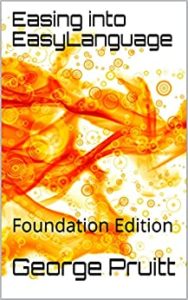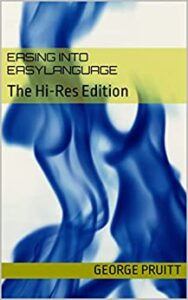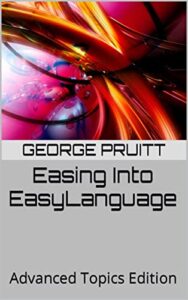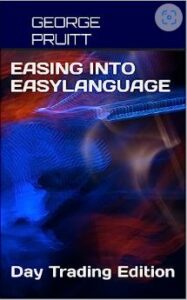Version 1.13 Now Available – Merge multiple TradeStation/MultiCharts strategy reports into one clean portfolio view
TS-PortfolioMerge is the must-have tool for TradeStation and MultiCharts users who believe in diversification. Profit is additive, but drawdowns aren’t—different markets and systems hit rough patches at different times. By trading more non-correlated markets and strategies within your risk profile, you can smooth the equity curve. TS-PortfolioMerge helps you test broadly, combine results, and uncover portfolio synergies that are hard to see in single-system reports. This tool is not a Portfolio Maestro nor a Portfolio Trader replacement. In the case of Maestro, it can perform combine system/markets much quicker. Portfolio Trader is much faster, but neither can search the entire portfolio space to find the best combination of markets like TS-PortfolioMerge can!

What it does
The TradeStation ecosystem is built around independent charts: one system on one market. That approach is perfect for unit tests, but it is less helpful for portfolio questions such as “Do these strategies’ drawdowns hit at the same time, or do they offset?” Historically you had to merge results by hand or wrestle with Portfolio Maestro. Its interface and performance are not ideal for fast exploration across large universes. TS-PortfolioMerge fills this gap. It pulls daily equity from multiple TradeStation or MultiCharts performance reports, merges them into a single portfolio equity curve, and lets you compare mixes in seconds. The software was created by George Pruitt to replicate the tools he has relied on for decades, without the complexity or cost of enterprise packages.
Overview
- TS-PortfolioMerge ingests strategy Performance Report (.xml) files from TradeStation or MultiCharts and builds a single, consolidated daily equity curve. It then calculates portfolio-level drawdowns, shows per-file contributions, and produces an at-a-glance report you can save or share.
- NEW FEATURE IN VERSION 1.13 – utilize a companion strategy to output trade data for TS-PortfolioMerge. With this approach you can create a Study Group and insert the Target Strategy along with the Companion Strategy in one effort. This approach adds a slightly more automated approach to getting the data out of TradeStation. Watch the video: Watch the video on version 1.13 additional method of getting data out of TradeStation
- Find the most efficient portfolio mix (two search modes)
- Exhaustive Search (exact).
Enumerates every combination of components up to a chosen size M and returns the Top-K mixes by your efficiency metric (commonly Profit-to-Drawdown = Net Profit ÷ Max DD). This guarantees the global best mix for the tested universe/size. Ideal when you have a moderate number of components. - NumPy Fast Search (accelerated).
Uses vectorized math to scan thousands to millions of candidate mixes rapidly—perfect for larger universes or when you want quick, near-optimal answers. You can set a sample limit and Top-K to surface the strongest candidates fast.
- Exhaustive Search (exact).
Who it’s for
System developers, researchers, and traders who run several systems/markets and want portfolio truth—not just single-system snapshots.
Expanded Key capabilities
- One-click merge. Load any number of TS/MultiCharts XMLs and get an immediate combined equity & drawdown picture.
- Equity & drawdown charts. Review the smoothed equity path alongside max drawdown and recovery points.
- Per-file breakdown. A “File Equity Summary” table shows each system/market’s equity curve and contribution.
- Subset selection. Toggle which systems/markets are included to quickly compare portfolio mixes.
- Mark-to-market guardrails. Open positions at the end of the data are handled correctly (no phantom P&L).
- Exports that travel. Save the combined daily equity and consolidated trades to CSV for spreadsheets or further research.
- Shareable reports. Built-in viewer with Save as PDF creates a clean, multi-page portfolio report.
- Fast re-runs. Smart caching speeds up iterating on different mixes and what-ifs.
- Friendly by design. Simple Windows installer, no Python or extra packages to install.
Recent updates
- New multi-page report viewer with Previous/Next navigation and Save as PDF (all pages). Report now includes Correlation Heat Map.
- Safer XML loader and better error handling on tricky files.
- Improved subset selection and portfolio refresh logic.
Sample Report – blending multiple systems and multiple timeframes
I like trend following systems, but many times they don’t like me. I chose Mike Covel’s system that he described in his 2004 book to help me demonstrate the power of TS-Portfolio Merge. I peppered two mean reversion systems on single markets and and a Nasdaq day trading system. The trend following system normalized position size based on trade risk. One contract was traded on the mean reversion and day trading strategy.
PortfolioReport
Download the full report (PDF)
Too much diversification and drawdown for your tastes?
Diversification is the most reliable way to smooth the rough edges of trend following. You do not need dozens of markets to get there; you can combine several independent systems on a focused set of markets. In this example we run three systems, with most capital in the trend-following sleeve. You could level the weights across all three, or keep a tilt toward trend, depending on your objectives and the correlations between systems.
But which systems and which markets should we trade to meet our objectives?
Let TS-PortfolioMerge figure that out:
Yep, that is over 3 million combinations of the 20 plus system/markets. The objective function is the total profit to maximum draw down ratio. Can it find a more favorable ratio? Like most investors, TradeStation users are often risk averse. Who wouldn’t be.
TS-PM found a ratio of 15.718 which means for every dollar of draw down nearly $16 was earned. Take a quick snapshot of this portfolio. Re-select just these nine markets. This feature is new as well. Each session allows you to first load all the xml files you intend to work with and later go back and just pick those system/markets that you want to combine.



Inputs & outputs
- Input: TradeStation/MultiCharts Performance Report (.xml) files (any mix of systems/markets/timeframes).
- Output:
- Consolidated daily equity & drawdown
- Per-file equity contributions
- CSV exports (combined equity, consolidated trades)
- PDF portfolio report
Typical workflow (2 minutes)
- Pick your .xml files.
- (Optional) Check/uncheck systems/markets to test portfolio mixes.
- Checkout the Quick Summary snapshot.
- Create a detailed Portfolio Analysis Report
- Save PDF.
The Offer:
I’m extending a Founders’ Pledge to the first 100 customers: you’ll receive updates for life. Several spots are still available from the first round. Interest was strong, so I pushed new features immediately—what you see here is the most powerful version of TS-PortfolioMerge so far. If you buy and have a suggestion for an improvement, I will definitely take it into consideration for the next version. I had a client that wanted me to add a button to spawn equity curves for each system/market and I am working on that now.
Requirements
- TradeStation or MultiCharts
- Windows 10/11
- Local folder of TradeStation/MultiCharts .xml reports







